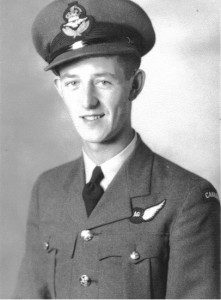
By Feb. 24, 1944, the 2,000 Commonwealth air officers penned inside Stalag Luft III had worked out a foolproof method of disposing of excavated sand from “Harry,” the tunnel through which the Kriegsfefangenen “kriegies” (prisoners of war) hoped to escape in a matter of weeks.
Torontonian, Albert Wallace, 22, had completed 15 operations as a mid-upper gunner aboard a Halifax bomber in RCAF 419 Squadron, when he was shot down in May 1943. After being processed into Stalag Luft III, he found himself assigned to Room 23 in Hut 104, within eye-shot of the entrance to Tunnel “Harry.” Except he didn’t find that fact out for some weeks. That’s how well kept the secret was.
Eventually, as part of the escape committee, Wallace worked as a penguin, hiding excavated sand in his pants to be dumped wherever the subsurface yellow sand could be scuffed into the white surface sand. His destination that winter was more obvious than the Germans figured.
“I remember going into the theatre one night with my bags full of sand,” Wallace said. “I was told where to sit because that’s where the trapdoor was. I sat in seat number 13, pulled my little tickies and out went the sand.”
On an exceptional day that winter, the penguins disposed of 12 tons of sand that way.